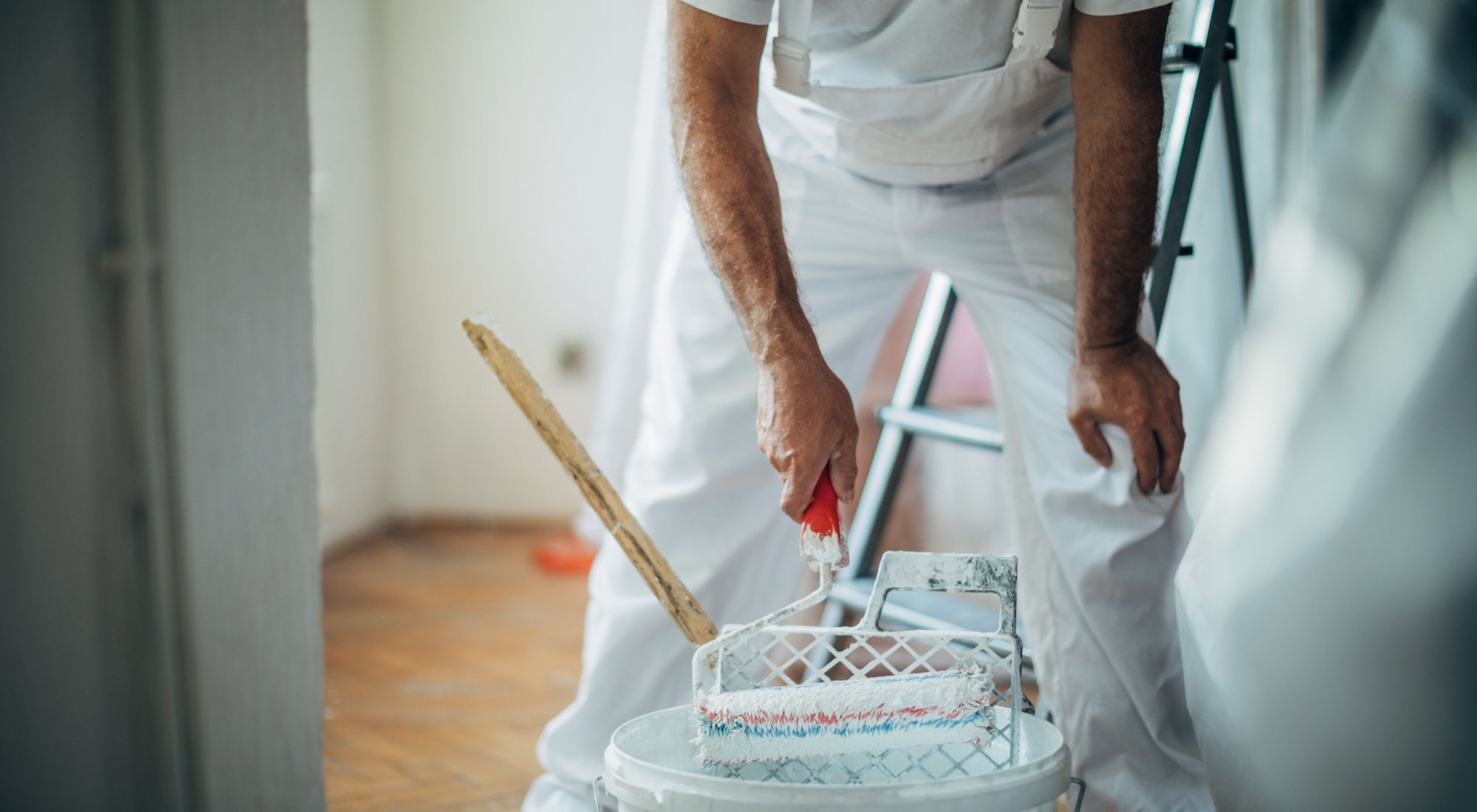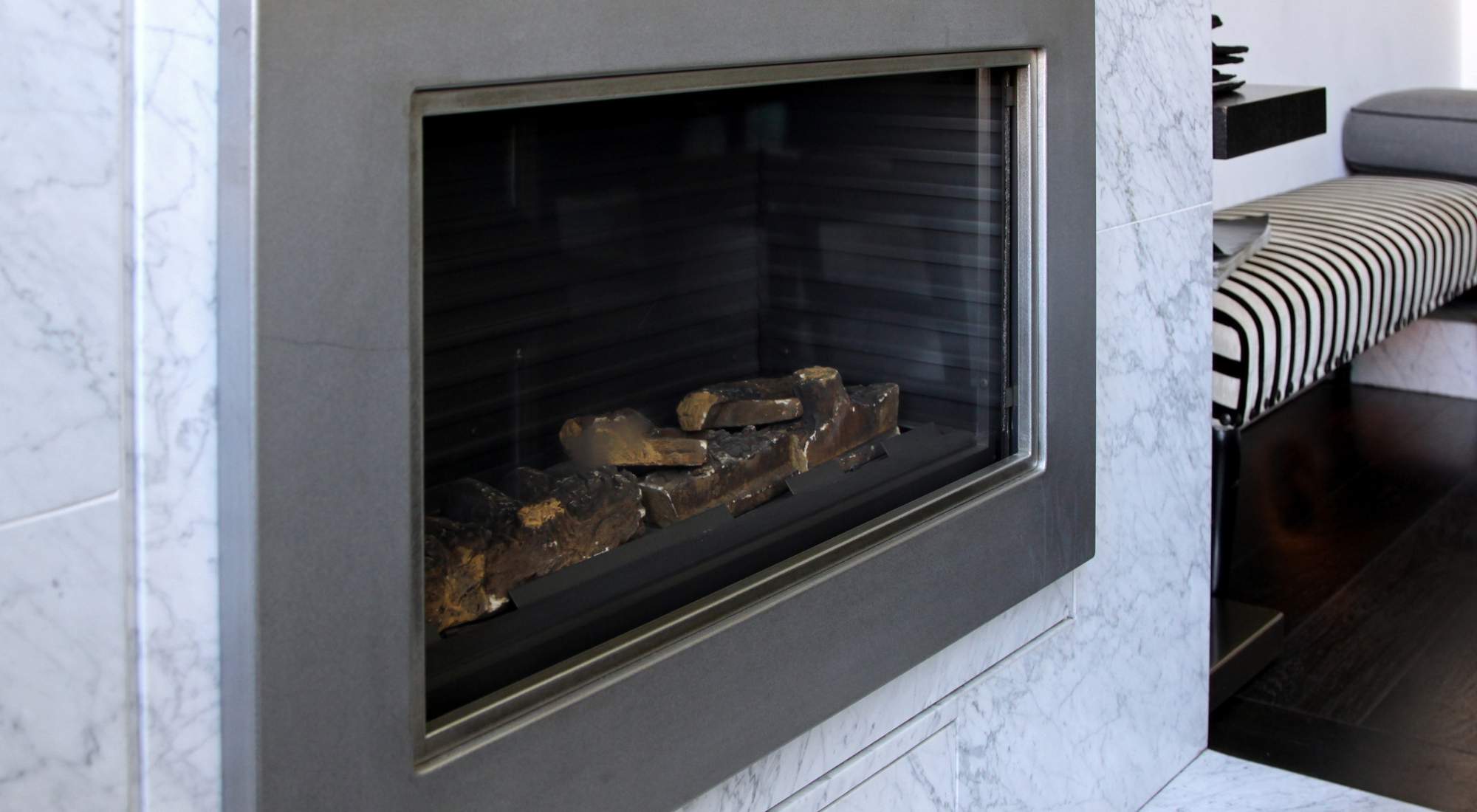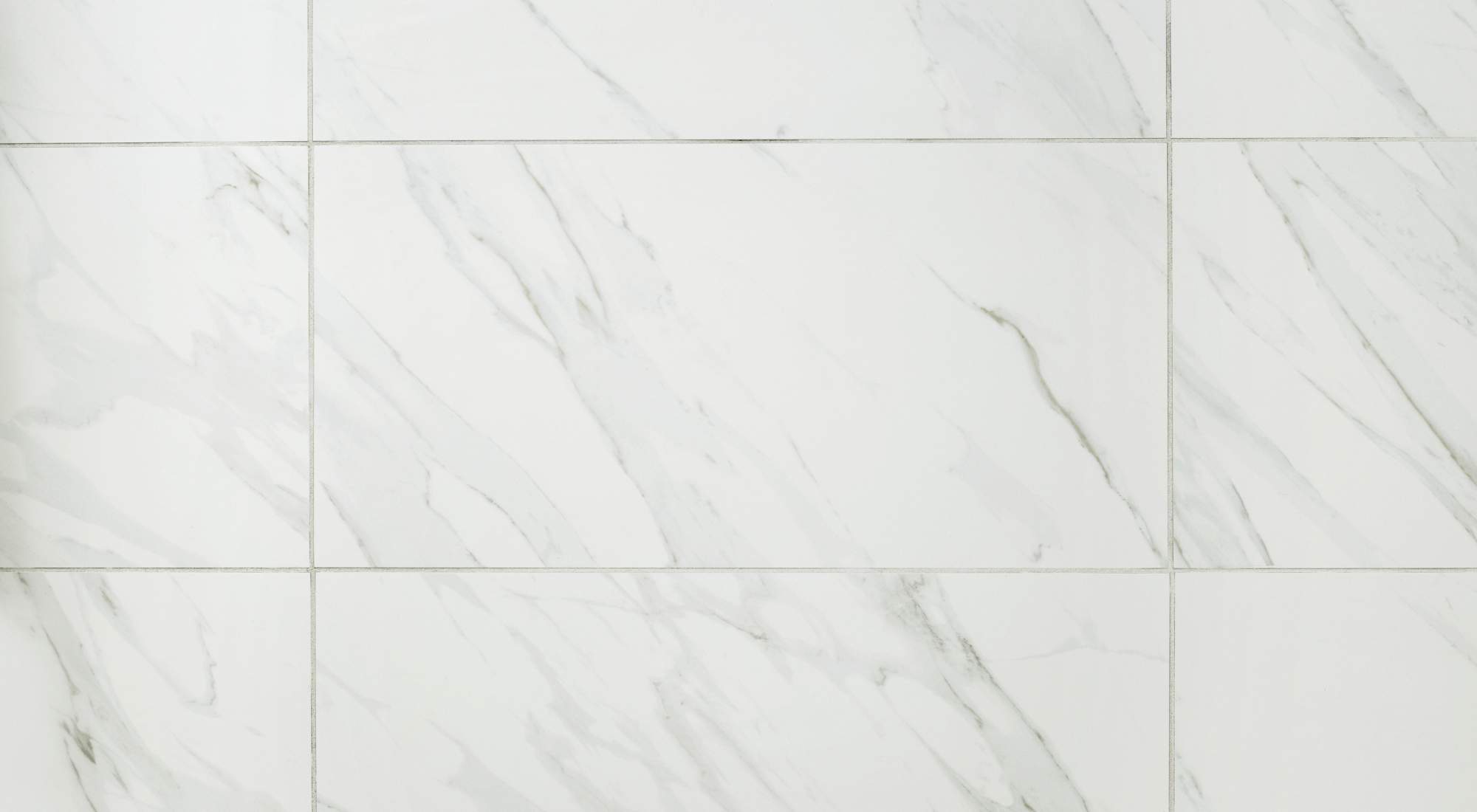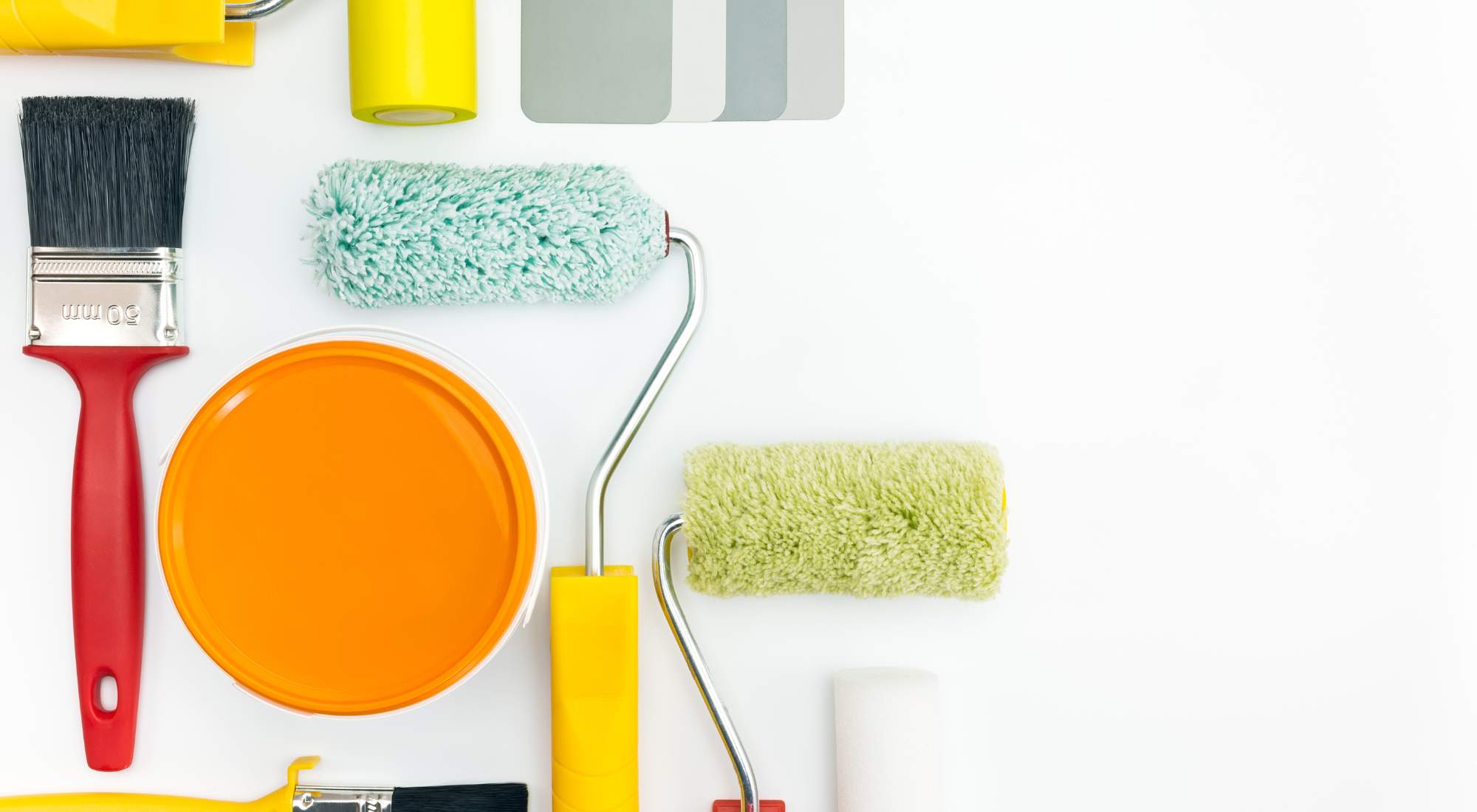Is it time to give your sad, outdated marble tile a face-lift? Or maybe you’ve just moved into a new home and your decorating tastes don’t match the existing tile’s color scheme.
Painting your tile sounds like the perfect solution.
But, can you paint marble tile? And if you can, how would you tackle such a seemingly huge project?
Whether you’re a weekend warrior considering tackling a DIY job or just curious about the ins and outs of painting marble tile, here’s what you need to know about painting over marble.
Table of Contents
- Can You Paint Marble Tile?
- 4 Drawbacks of Painting Marble Tile
- What Kind of Paint Can You Use on Marble Tile?
- How to Paint Marble Tile in 3 Steps
- FAQs About Painting Over Marble Tile
- Two Brothers Painting: A Professional Team Rescuing DIYers From the Hardship of Painting Marble Tile
Can You Paint Marble Tile?
If you want to update your marble with a trendier color, good news — like most surfaces, marble tile can be painted. But just because you can paint marble tile doesn’t mean it’s always the best idea.
Should You Paint Marble Tile?
Now that we’ve established that you can paint marble tile, you need to consider if it’s something you should do.
If you decide to go for it, it’s important to keep in mind that painting over marble is generally permanent. If you’re thinking you’d like to paint your marble tile, but can always go back to raw marble if you don’t love it or decide to change your decor, you will probably want to reconsider.
But if you’re firm in your decorating decision, painting over marble tile provides an endless choice of colors and can be the perfect way to give your tile a fresh new look.
4 Drawbacks of Painting Marble Tile
The process of painting marble tile is not one to be taken lightly. It involves a considerable amount of labor and time — especially if you are doing it as a DIY project.
That’s why painting over marble tile may best be left to professionals, like Two Brothers Painting. Our team knows painting like the back of our hand and can have your project completed — and your space back to normal — in the least amount of time possible.
Contact Two Brothers Painting today to schedule an estimate.
#1: Time-Consuming
Painting over marble can be a lengthy project if you take the time to do it the right way.
The process involves very specific preparation and application strategies to ensure you are not left with a sub-par finish that will chip and peel.
Properly sanding the tile can take hours, not to mention the time it takes to prime, paint, and allow for adequate drying.
#2: Expensive
Painting marble tile can be an expensive process.
To do the job the right way, you’ll have to buy a variety of supplies, including:
- Sanding supplies, like a belt sander and respiratory protection
- Primer
- Sealant
- Gloves
- Safety glasses; and
- Hearing protection
#3: Not Reversible
An important factor to consider when deciding whether to paint marble tile is the fact that once it is complete, the process isn’t reversible.
When done correctly, the paint you apply to marble tile should not be removable — meaning you can’t decide later to go back to the original marble.
#4: Potentially Toxic
Another issue that needs to be discussed when it comes to painting marble tile is safety.
A critical step in preparing the surface of the marble is sanding. While in some cases, the marble will only need light scuffing, in others, a belt sander may be required to adequately rough the surface enough to prepare it for the adherence of the paint.
This requires, at the minimum, wearing an N95 mask. For optimal safety, however, you should consider using a half-mask respirator.
Why is using the proper type of respiratory protection so vital when you’re sanding marble? One word: silica.
Crystalline silica isn’t dangerous while it’s in the marble, but when it becomes a fine powder, it can easily be ingested into your lungs — and it doesn’t come out.
This free silica works its way into the tissue of your lungs, creating scar tissue that can eventually lead to a variety of lung diseases, including:
- Pneumoconiosis
- Chronic obstructive pulmonary disease (COPD)
- Silicosis
- Asthma
What Paint Will Stay on Marble?
There are a number of options you can use for painting marble tile, including chalk paint and epoxy paint.
Many people who want to paint marble use chalk paint. It is probably the most common type of paint used since very little prep work is required, and it is reasonably priced.
However, chalk paint is not the best option if you’re looking for durability, since it doesn’t adhere as well as epoxy paint.
If you do opt for chalk paint, you will need to add the extra step of applying a sealant over it to provide some protection.
For long-term use and durability, you may want to consider epoxy paint. Not only is it extremely durable, but it also offers a glossy finish. Epoxy paint application can be tricky due to the composition of the paint and the paint fumes, so it is usually best to have the job done by professionals.
How to Paint Marble Tile in 3 Steps
Step #1: Etch the Marble
The most important part of the process as you’re considering how to paint marble tile is surface preparation.
You must scuff the surface of the marble to prepare it to accept paint. This step may be done in one of two ways:
- Acid etching – Use a product that contains muriatic acid to eat away the top layer of marble.
- Sanding – Occasionally, this can be done with light grit sandpaper. But in some cases, you may need a belt sander to remove the gloss.
- Before you begin sanding the surface of the marble, tape off the surrounding area and put down blankets and drop cloths to make cleanup easier.
- Respiratory protection is critical for this step due to the creation of dangerous silica dust in the sanding process.
- Once you finish sanding, you will need to clean up. This includes carefully wiping down the marble to ensure all dust has been removed.
Step #2: Prime the Marble
When you’re selecting a primer (and paint) you want to work closely with the manufacturer of your marble tile to find out which product line to work with. If you don’t do your research and select the right materials, you could be left with a botched job and peeling paint.
If you’re using chalk paint, primer is typically not used. But if you choose an epoxy paint, priming the marble tile is the next step to make the project a success.
You’ll want to select a low-viscosity primer specially designed for countertops, floors, and other high-use areas.
Once the marble has been prepped and is clean and dry, apply an even coat of primer by either spraying or using a brush. Make sure the layer is nice and smooth since any ridges or bumps will show through in later steps and ruin the final look of your product.
While some people are tempted to skip the primer — don’t. This is an essential step to ensure the paint adheres well to your surface.
Step #3: Paint the Marble
When your primer is completely dry, you are ready to paint your marble tile.
Keep in mind that each layer of paint needs time to dry before you apply the next one. An hour of drying time should be sufficient, unless the weather is especially humid, in which case you can check the paint every 15 minutes until you’re sure it’s dry.
FAQs About Painting Over Marble Tile
What Is the Best Paint To Cover Marble?
The best paint for covering marble tile depends on the tile’s purpose. Is your marble tile:
- Part of a fireplace?
- The hearth for a wood-burning stove?
- Being walked on?
- Scratched?
Each project is unique and requires different products, depending on the environment the marble tile is in.
At Two Brother Painting, we understand the factors to consider when selecting the right paint for your marble tile. That’s why we consult the manufacturer’s representative to get their recommendation for the correct product line before we begin, so you’re left with a paint job that is not only beautiful but will also stand the test of time.
Can Marble Countertops Be Painted?
Yes. The process for painting marble kitchen or bathroom counters is the same as for marble tile. Sanding and epoxy paint are the best options for longevity, however, always check with the manufacturer for their specific product recommendation.
Can a Marble Fireplace Be Painted?
Yes, you can paint your marble fireplace using the same method outlined above. The only difference is you’ll need to be sure you’re using heat-resistant paint and a primer to prevent soot and dust from coming through. You’ll also need to be careful to protect the areas of the fireplace you’re not painting with tape and drop cloths.
Can Cultured Marble Be Painted?
Yes, cultured marble can be painted in the same manner as the natural variety. Some types of cultured marble are extra slick, so be sure you’re giving it a good sanding and using the right primer before you paint. You also want to start with a clean surface for best results.
How Do You Change the Color of Marble?
Unless you paint it, changing the color of marble tile is nearly impossible. However, white marble may occasionally be dyed.
Can Acrylic Paint Be Used on Marble?
You can paint marble with acrylic paint, but it probably won’t last long and is likely to peel off eventually. That’s why we strongly recommend either chalk paint or epoxy paint to cover your marble tile.
Two Brothers Painting: A Professional Team Rescuing DIYers From the Hardship of Painting Marble Tile
Painting over marble tile can be a daunting task, and if something should happen to go awry, you’re left with an expensive mistake. That’s why you should consider calling in the professionals.
With close to 150 years of combined experience, the Portland painting contractors at Two Brothers Painting have the knowledge and expertise to handle your marble tile painting project with the utmost skill.
And as a family-owned business, we take great pride in offering responsive, reliable service.
Contact Two Brother Painting today to schedule an estimate.





